What's New
Displaying results 3681 - 3690 of 4052
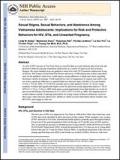
Resource | Publications,
As rates of HIV increase in Viet Nam, there is a need for data on social relations and sexual risk and protective behaviors among Vietnamese adolescents in a context of rapid social and economic changes. We report findings from our qualitative interviews with 159 Vietnamese adolescents living in Ha Noi, Nha Trang City and Ninh Hoa District and survey of 886 adolescents in these same three sites. In the qualitative interviews, youth report a strong adherence to ideals and values regarding abstinence outside of marriage.
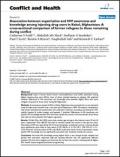
Resource | Publications,
Little is known about human immunodeficiency virus (HIV) awareness among Afghan injecting drug users (IDUs), many of whom initiated injecting as refugees. We explored whether differences in HIV awareness and knowledge exist between Afghan IDUs who were refugees compared to those never having left Afghanistan.
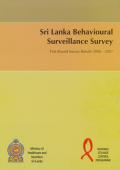
Resource | Publications,
The purpose of the Behavioural Surveillance Survey (BSS) in Sri Lanka are to:
- monitor change in HIV-related behaviours of specified populations or sub-populations over time
- inform the development of prevention-related interventions and activities
- evaluate the impact and effectiveness of prevention-related interventions and activities.
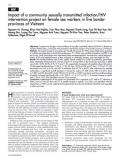
Resource | Publications,
The objective of the project is to determine changes in the prevalence of sexually transmitted infection (STI)/HIV in female sex workers (FSWs) after a community HIV prevention intervention project in five border provinces of Vietnam. The project focused on providing user-friendly STI services for FSWs using mobile teams operating at multiple sites depending on local client preferences.
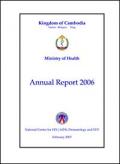
Resource | Publications,
The HIV Serosurveillance survey (HSS) 2003 found a 1.9% HIV prevalence among adults aged 15-49 years. Using HSS 2003 figures, it was estimated that 123,000 adults were living with HIV/AIDS including 57,000 women and that an estimated 9,000 children were living with HIV in 2003. The HSS round IX was conducted from November 2006 to February 2007. HSS 2006-2007 HIV prevalence estimates will be calibrated with the CDHS 2005-2006 HIV prevalence estimates in a consensus workshop that will be held at NCHADS in April 2007. The output of this expert consultation will include updated official estimates of HIV prevalence among the general population of adults and children, and estimates of the number of adults and children in need of ART.
After reaching the 3 by 5 targets in 2005, Cambodia has committed to further strengthen its response to the HIV/AIDS epidemic and reach Universal Access by 2010.
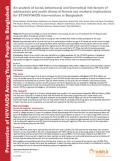
Resource | Publications,
To generate knowledge on sexual risk behaviour and practices, condom use, STI symptoms and STI disease burden among youth clients of female sex workers in Dhaka.
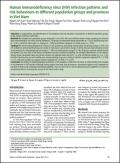
Resource | Publications,
Many countries in Asia are experiencing epidemics of human immunodeficiency virus (HIV) in injecting drug users and female sex workers. These epidemics are characterized by a marked contrast in patterns of HIV transmission both within and between countries. The situation in the neighbouring countries of Cambodia, the Lao People’s Democratic Republic and Viet Nam provides a part ticular illustration of sharply contrasting epidemic patterns.
As part of the intervention project Community Action for Preventing HIV/AIDS in Cambodia, Viet Nam and the Lao People’s Democratic Republic, baseline surveys were conducted in 2002 to provide a basis for short- and long-term evaluation.
This report aims to study patterns and determinants of HIV prevalence and risk-behaviour characteristics in different population groups in four border provinces of Viet Nam.
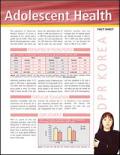
Resource | Fact Sheets,
The population of Democratic People's Republic of Korea is estimated at 22.7 million with a growth rate of 0.54%. More than 60% of the total population is urban. The total fertility rate which was above the replacement level of fertility in 1990 had reduced to 2.0 in 1999. The crude birth rate of the country is 16.7 and crude death rate 9.9. DPR Korea has 100% literacy rate for both men and women.
Maternal mortality ratio has increased from 54 maternal deaths per 100,000 live births in 1993 to 105 in 20002 and infant mortality rate from 14.1 per thousand live births in 1996 to 21.8 in 2002.
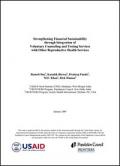
Resource | Publications,
The Child in Need Institute (CINI) operated an HIV/AIDS Voluntary Confidential Counseling and Testing (VCCT) center and a Reproductive Health (RH) clinic at separate locations. Concerns about lack of service coordination as well as cost and revenue considerations led CINI to integrate the two services. CINI conducted an operations research (OR) study to examine the impact of integration on utilization and revenues.
The objective of this study was to examine whether integration of services would yield an increase in clients served and improve the financial position of the program. A monitoring system was established to capture utilization, cost, and revenue data. The utilization analysis focused on determining if more clients received services, and measuring the proportion of clients who received both RH and VCCT services. The financial analysis focused on determining whether the provision of services to a client (separately or together) added more to program costs or to program revenues.
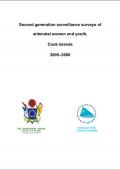
Resource | Publications,
In 2005 and 2006 the Cook Islands Ministry of Health, with technical assistance from the Secretariat of the Pacific Community, conducted second generation surveillance (SGS) surveys of antenatal women and youth. This report summarizes the results of the SGS surveys in the two population groups.
Surveys were administered to a total of 100 antenatal women between May 2005 and June 2006, and 94 surveys were eligible for final reporting.





